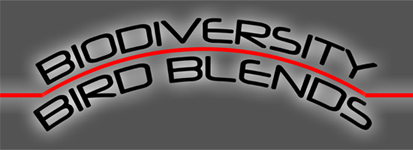
 |
|
|
 |
|
Health Benefits of Tea American Friends of Tel-Aviv University. (2008). Anti-cancer flower power. August 25, 2008. Accessed online March 5, 2008.http://www.aftau.org/site/News2?page=NewsArticle&id=7599 Bald, C. (1940). Indian tea: A textbook on the culture and manufacture of tea. Fifth Edition. Revised and Partly Rewritten by C.J. Harrison. Calcutta: Thacker, Spink & Co. Bloomberg, J.B. & McKay, D .L. (2006). A review of the bioactivity and potential health benefits of peppermint tea (Mentha piperita L.). Phytotherapy Research, 20. Cabrera, C., Artacho, R., & Gimenez, R. (2006). Beneficial effects of green tea: A review. Journal of the American College of Nutrition, 25(2), 79-99. Carter, O. (2007). Comparison of white tea, green tea, epigallocatechin-3-gallate, and caffeine as inhibitors of PhIP-induced colonic aberrant crypts. Nutrition & Cancer, 58(1): 60-65. Chacko, S. M., Thambi, P. T., Ramadasan, K., & Nishigaki, I. (2010). Beneficial effects of green tea: A literature review. Chinese Medicine, 5, 13-21. Chan, PT, Fong, WP, et al (1999). Jasmine green tea epicatechins are hypolipidemic in hamsters (Mesocricetus auratus) fed a high fat diet. Journal of Nutrition, 129(6): 1094-1101. Chow, H. H. (2003). Pharmacokinetics and safety of green tea polyphenols after multiple-dose administration of epigallocatechin gallate and polyphenon E in healthy individuals. Clinical Cancer Research, 9(9): 3312-3319. Chow, Kit. (1990). All the tea in China. China Books & Periodicals, Inc. Cooper, R., Morre’, D. J., & Morre’, D. M. (2005). Medicinal benefits of green tea: Part I. Review of noncancer health benefits. The Journal of Alternative and Complementary Medicine, 11(3), 521-528. Duffy, S. J., Keaney, Jr, J. F., Holbrook, M., Gokce, N., Swerdloff, P. L., Frei, B., Vita, J. A. (2001). Short- and long-term balck tea consumption reverses endothelial dysfunction in patients with coronary artery disease. Circulation, 104(2), 151-156. Dulloo, A. G. (1999). Efficacy of a green tea extract rich in catechin polyphenols and caffeine in increasing 24-h energy expenditure and fat oxidation in humans.American Journal of Clinical Nutrition, 70(6), 1040-1045. Evans, John C. (1992). Tea in China: The history of China's national drink. Greenwood Press. Gardner, E. J., Ruxton, C. H. S., & Leeds, A. R. (2007). Black tea: Helpful or harmful? European Journal of Clinical Nutrition, 61(1), 3-18. Han, C. & Xu, Y. (1989). The effect of Chinese teas on the occurrence of oesophageal tumor caused by N-nitrosomethylbenzylamine in rats. Zhonghua Yu Fang Yi Xue Za Zhi, 23(2): 67-70. Harler, C.R. (1956). The culture and marketing of tea. Second edition. New York: Oxford University Press. Hobhouse, H. (2005). Seeds of change: Six plants that transformed mankind. Shoemaker & Hoard. Jyoti, J. (2007). Antistressor activity of Ocimum sanctum (tulsi) against experimentally induced oxidative stress in rabbits. Methods and Findings in Experimental and Clinical Pharmacology, 29(6): 411-416. Kato, A. (2008). Protective effects of dietary chamomile tea on diabetic complications. Journal of Agricultural & Food Chemistry, 56(17): 8206-8211. Kolanjiappan, K. & Manoharan, S. (2005). Chemopreventive efficacy and anti-lipid peroxidative potential of Jasminum grandiflorum Linn. on 7,12-dimethylbenz(a)anthracene-induced rat mammary carcinogenesis. Fundamentals & Clinical Pharmacology, 19(6): 687-693. Kuroda, K. Sedative effects of the jasmine tea odor and (R)-(-)-linalool, one of its major odor components, on autonomic nerve activity and mood states. European Journal of Applied Physiology, 95(2-3): 107-114. Leung, L. K., Su, Y., Chen, R., Zhang, Z., Huang, Y., & Chen, Z. (2001). Theaflavins in black tea and catechins in green tea are equally effective antioxidants. The Journal of Nutrition, 131(9), 2248-2251. Lipovac, M. (2011). The effect of red clover isoflavone supplementation over vasomotor and menopausal symptoms in postmenopausal women. Gynecology Endocrinology, 28(3): 203-207. Nagao, T. (2005). Ingestion of a tea rich in catechins leads to a reduction in body fat and malondialdehyde-modified LDL in men. American Journal of Clinical Nutrition, 81(1), 122-129. Namita, P., Mukesh, R., & Vijay, K. J. (2012). Camellia sinensis (Green tea): A review. Global Journal of Pharmacology, 6(2), 52-59. Pace University. (2004). White tea studies at Pace University.http://pressroom.blogs.pace.edu/2004/06/01/white-tea-better-than-green-tea/ Packer, L. (2004). Herbal and traditional medicine: Molecular aspects of health. CRC Press. Peng, X., Zhou, R., Wang, B., Yu, B., Yang, X., Liu, K., & Mi, M. (2014). Effect of green tea consumption on blood pressure: A meta-analysis of 13 randomized controlled trials. Scientific Reports, 4, 6251. Pommier, P. (2004). Phase III randomized trial of Calendula officinalis compared with trolamine for the prevention of acute dermatitis during irradiation for breast cancer. Journal of Clinical Oncology, 22(8), 1447-1453. Ruxton, C. H. S. (2013). Emerging evidence for tea benefits. Nutrition Bulletin, 38(3), 287-301. Ruxton, C. H. S. (2008). Black tea and health. Nutrition Bulletin, 33(2), 91-101. Ruxton, C. H. S. & Mason, P. (2011). Is black tea consumption associated with a lower risk of cardiovascular disease and type 2 diabetes? Nutrition Bulletin, 37(1), 4-15. Santesso, N & Manheimer, E. (2014). Green and black tea for the primary prevention of cardiovascular disease. Global Advances in Health & Medicine, 18(6), 66-67. Vinson, J. A. (2004). Green and black teas inhibit atherosclerosis by lipid, antioxidant, and fibrinolytic mechanisms. Journal of Agricultural & Food Chemistry, 52(11): 3661-3665. Yamamoto, T., Kim, M., Juneja, L. R. (1997). Chemistry and applications of green tea. CRC Press. Yeruva, L. (2008). Delayed cytotoxic effects of methyl jasmonate and cis-jasmone induced apoptosis in prostate cancer cells. Cancer Investigations, 26(8), 90-99. Zhang, A. & Zhu, Q. (1997). Inhibitory effects of jasmine green tea epicatechin isomers on free radical-induced lysis of red blood cells. Life Science, 61(4), 383-94. Zhang, Z. (2001). Protective effect of green tea on the risks of chronic gastritis and stomach cancer. International Journal of Cancer, 92(4), 600–604. Jason Crean MA,MS Statements have not been evaluated by the FDA and are not intended to treat, mitigate or cure any diseases. |